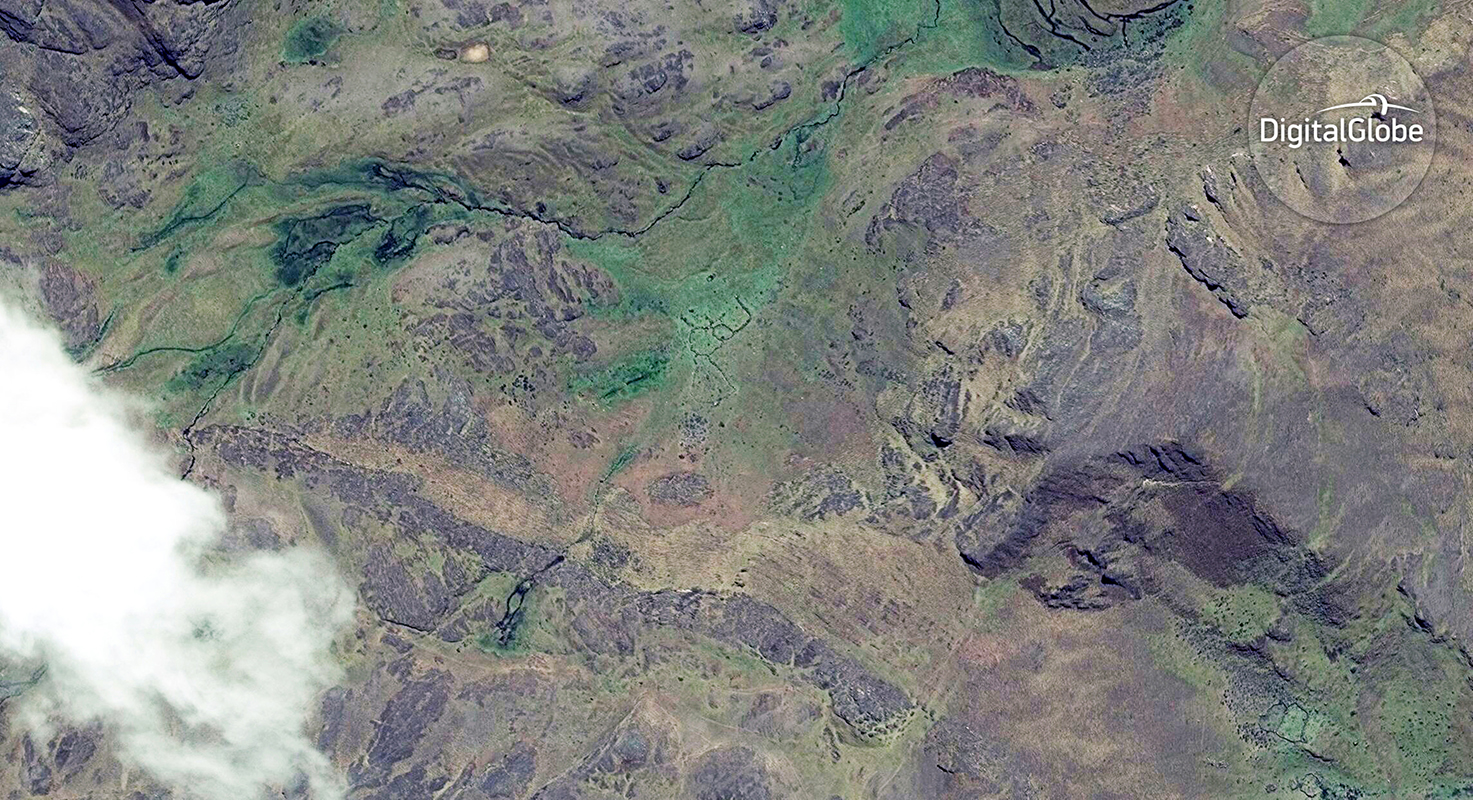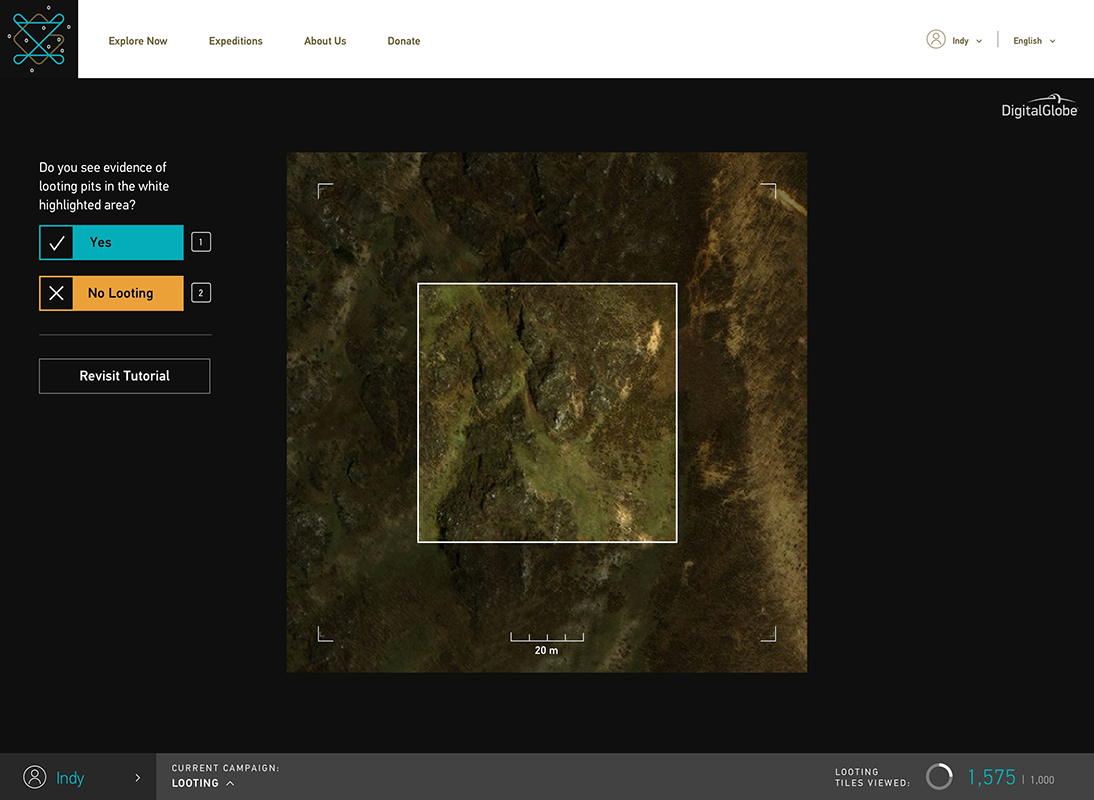Be a Space Archaeologist! Explore Sites with Online Platform

If you find the artifact-hunting adventures of Indiana Jones thrilling but a little too gritty, a new online tool will allow you to remotely analyze images of ancient sites taken from space. You can discover their hidden secrets and even protect them from looting and damage.
Welcome to the 21st-century world of space archaeology, in which culturally important ruins can be spotted and decoded via high-resolution images captured by Earth-orbiting satellites. And a platform called GlobalXplorer puts this experience at any user's fingertips, inviting all who have internet connections to assist archaeologists in finding and protecting sites around the world, some of which are yet to be brought to light.
GlobalXplorer, which launched today (Jan. 30), is stocked with imagery captured by satellite provider DigitalGlobe, representing 77,220 square miles (200,000 square kilometers) of sites located in Peru. By scanning "tiles" of the ground, users can identify and flag telltale signs of looting activity or unusual features that could represent an undiscovered structure, platform creator and space archaeologist Sarah Parcak announced at a press conference. Archaeologists and government agencies can then use this data to preserve sites that are in peril and to launch new excavations in unexplored areas, Parcak told reporters. [Image Gallery: How Technology Reveals Hidden Art Treasures]
GlobalXplorer's design is based on a platform pioneered by DigitalGlobe called Tomnod, which allows users to annotate satellite photos and map objects of interest related to events such as wildfires and earthquake recovery missions, according to their website.
The goal was not only to engage people in analyzing archaeological sites, but also to keep these users coming back, Parcak said during a telephone news conference. To that end, the platform includes gaming elements, such as leveling up as users gain proficiency and unlocking "rewards" as experts collect and review users' data. Those rewards can include behind-the-scenes videos and other peeks into the archaeological process.
Even a GlobalXplorer user with no scientific training can quickly learn to identify shapes in a bird's-eye view of a landscape that send up red flags to archaeologists, Parcak said.

For example, so-called "looting holes" — pits dug at archaeological sites illegally to remove artifacts for private sale — have a distinct circular appearance, tending to be surrounded by "a shallow donut of earth," Parcak explained. "Where there is one, there are probably dozens to hundreds of them," she said. "Once you've seen what it looks like, it's very easy to recognize."
Sign up for the Live Science daily newsletter now
Get the world’s most fascinating discoveries delivered straight to your inbox.
And variations in plant color, visible through different filters in satellite images, can hint at the health of the vegetation, suggesting if it might be concealing a hidden human-made structure, Parcak said.
Archaeology in general — and projects like GlobalXplorer in particular — can also provide users with some perspective on current global problems, by connecting people to the scope of human history, Parcak added. Ancient civilizations, like modern ones, experienced periods of intense crisis, followed by resilience and recovery. Knowing that cultures from the distant past faced and overcome serious trials can send a message of hope to those who are worried about the challenges faced today, she said.
"It's called 'a platform for humanity' because we're all human beings at the end of the day," Parcak said. "Understanding who we are and where we come from and knowing that we're all the same can connect us in a way that we need right now."
Original article on Live Science.

Mindy Weisberger is an editor at Scholastic and a former Live Science channel editor and senior writer. She has reported on general science, covering climate change, paleontology, biology and space. Mindy studied film at Columbia University; prior to Live Science she produced, wrote and directed media for the American Museum of Natural History in New York City. Her videos about dinosaurs, astrophysics, biodiversity and evolution appear in museums and science centers worldwide, earning awards such as the CINE Golden Eagle and the Communicator Award of Excellence. Her writing has also appeared in Scientific American, The Washington Post and How It Works Magazine. Her book "Rise of the Zombie Bugs: The Surprising Science of Parasitic Mind Control" will be published in spring 2025 by Johns Hopkins University Press.











